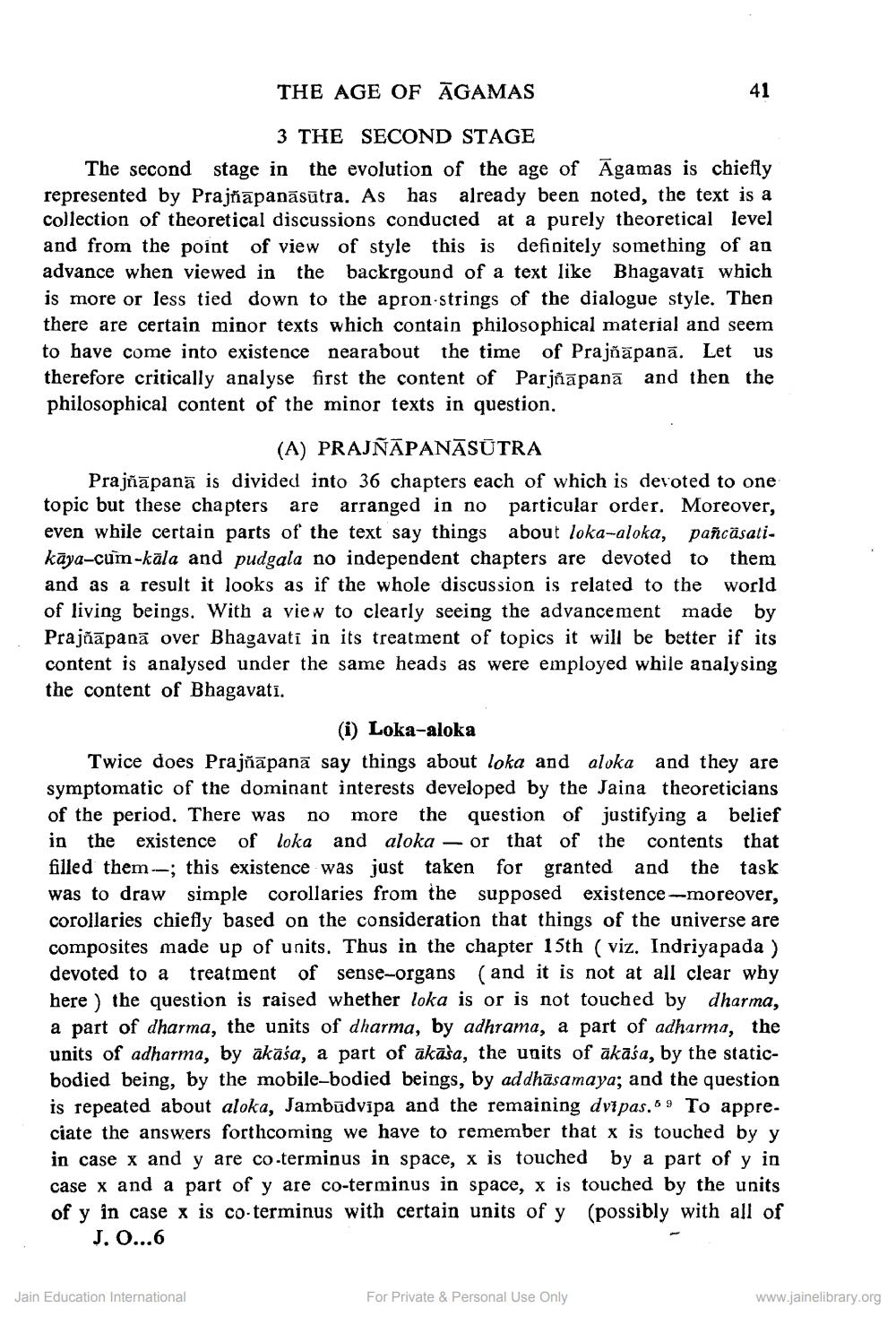________________
THE AGE OF ĀGAMAS
3 THE SECOND STAGE The second stage in the evolution of the age of Agamas is chiefly represented by Prajñāpanāsūtra. As has already been noted, the text is a collection of theoretical discussions conducted at a purely theoretical level and from the point of view of style this is definitely something of an advance when viewed in the backrgound of a text like Bhagavatí which is more or less tied down to the apron-strings of the dialogue style. Then there are certain minor texts which contain philosophical material and seem to have come into existence nearabout the time of Prajñāpanā. Let us therefore critically analyse first the content of Parjñāpanā and then the philosophical content of the minor texts in question.
(A) PRAJSẬPANASUTRA Prajñāpanā is divided into 36 chapters each of which is devoted to one topic but these chapters are arranged in no particular order. Moreover, even while certain parts of the text say things about loka-aloka, pañcäsati. kāya-cum-kala and pudgala no independent chapters are devoted to them and as a result it looks as if the whole discussion is related to the world of living beings. With a view to clearly seeing the advancement made by Prajñāpanā over Bhagavati in its treatment of topics it will be better if its content is analysed under the same heads as were employed while analysing the content of Bhagavati.
(i) Loka-aloka Twice does Prajñāpanā say things about loka and aloka and they are symptomatic of the dominant interests developed by the Jaina theoreticians of the period. There was no more the question of justifying a belief in the existence of loka and aloka - or that of the contents that filled them-; this existence was just taken for granted and the task was to draw simple corollaries from the supposed existence --moreover, corollaries chiefly based on the consideration that things of the universe are composites made up of units. Thus in the chapter 15th (viz. Indriyapada ) devoted to a treatment of sense-organs (and it is not at all clear why here the question is raised whether loka is or is not touched by dharma, a part of dharma, the units of dharma, by adhrama, a part of adharma, the units of adharma, by akāśa, a part of akāša, the units of akāśa, by the staticbodied being, by the mobile-bodied beings, by addhāsamaya; and the question is repeated about aloka, Jambūdvīpa and the remaining dvipas. 6 9 To appre. ciate the answers forthcoming we have to remember that x is touched by y in case x and y are co-terminus in space, x is touched by a part of y in case x and a part of y are co-terminus in space, x is touched by the units of y în case x is co-terminus with certain units of y (possibly with all of
J. 0...6
Jain Education International
For Private & Personal Use Only
www.jainelibrary.org




